This is an easy-to-make vegetarian curry which is filling and satisfying. The spinach and potatoes make this meal a great source of fiber and chock full of antioxidants. Sweet chard, collard greens, or bok choy can also be used in place of the spinach.
If Popeye Made Potato Curry, This Would Be It!
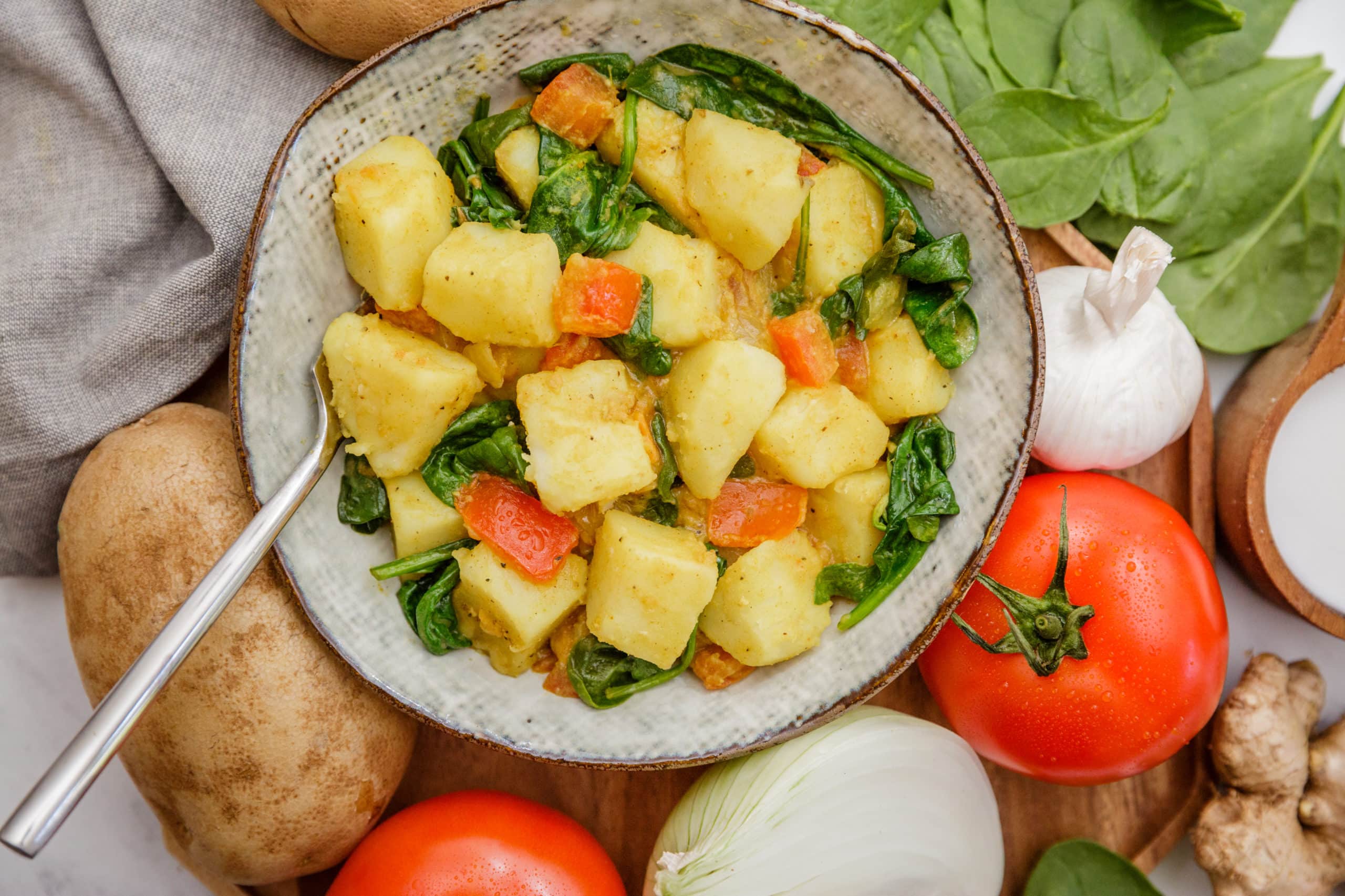
This vegetarian curry has a creamy coconut sauce pleasantly spiced with just the right amount of heat. Plus, with a plentiful helping of spinach, it will make your body happy, too! A vegetable curry is one of the tastiest ways to get those healthy vegetables into your daily diet (for any meal from breakfast to dinner to late night snack!).
Feel free to change up the vegetables, as long as you slice them so they’re all about the same size. You could try broccoli, cauliflower, mushrooms, diced butternut or sweet potato, sliced zucchini, or yellow squash.
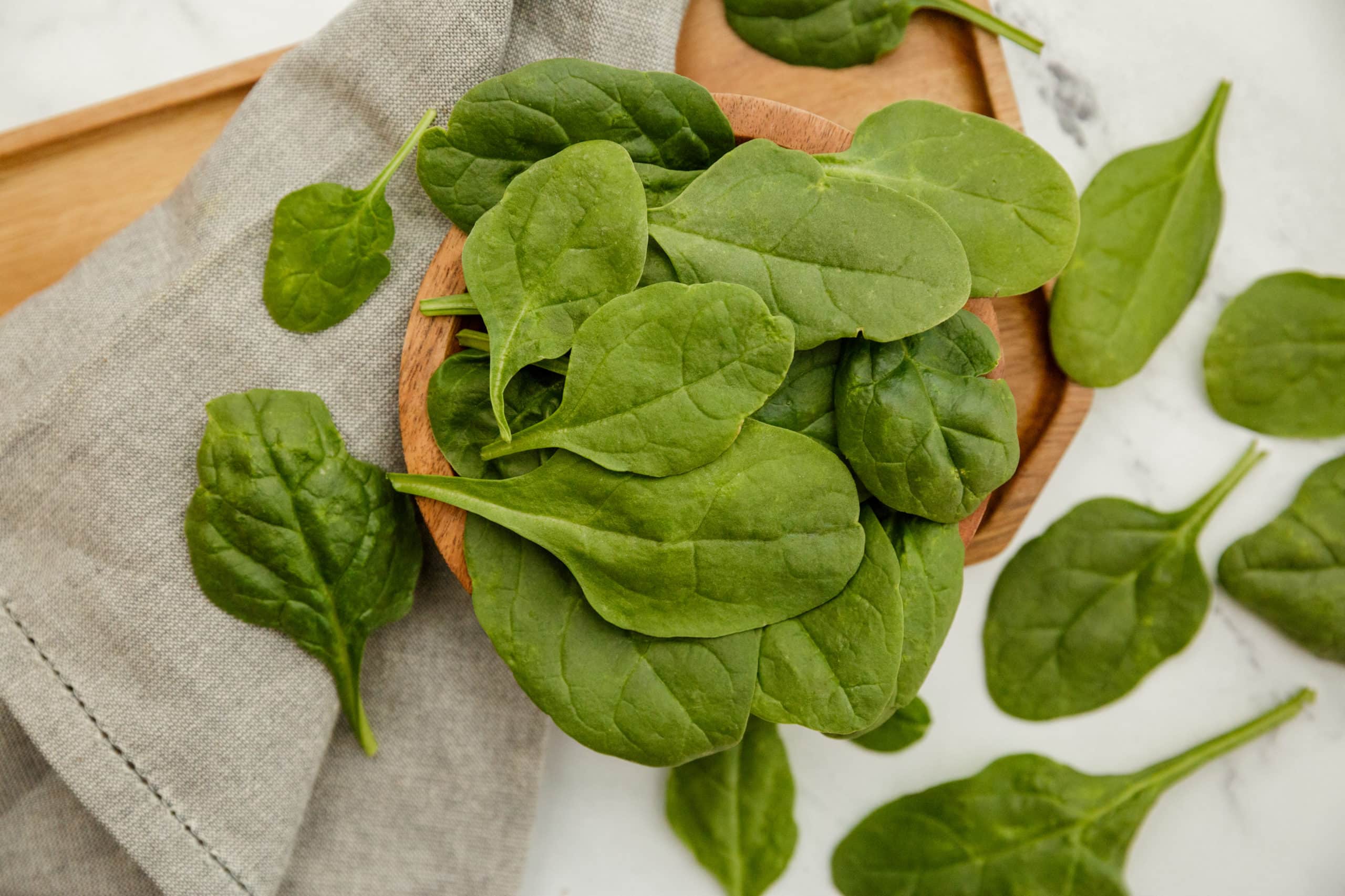
Why is Spinach a Superfood?
The origin of spinach lies in ancient Persia which today is Iran as well as several other bordering countries. It is believed that the edible greens may have originated from Spinacia Tetranda – a wild edible plant that is found in Anatolia today. From Persia, spinach was introduced in India and then in Ancient China around the year 647 AD where it got a new, alternative name “Persian vegetable”.
Spinach is a nutritious, leafy green. This vegetable has been shown to benefit health in several ways, classifying it as a superfood. Spinach may decrease oxidative stress, improve eye health, and help prevent heart disease and cancer. If you're interested in its health-boosting potential, spinach is an easy food to add to your diet.
This leafy vegetable is considered a superfood. But, why? The reason why spinach is considered a superfood is because of the loads of nutrients and low-caloric value that it possesses. This leafy vegetable also benefits your skin, hair, and bones.
Spinach is an excellent source of many vitamins and minerals, including:
Vitamin A. Spinach is high in carotenoids, which your body can turn into vitamin A.
Vitamin C. This vitamin is a powerful antioxidant that promotes skin health and immune function.
Vitamin K1. This vitamin is essential for blood clotting. Notably, one spinach leaf contains over half of your daily needs.
Iron. Spinach is an excellent source of this essential mineral. Iron helps create hemoglobin, which brings oxygen to your body’s tissues.
Calcium. This mineral is essential for bone health and a crucial signaling molecule for your nervous system, heart, and muscles.
In order to maximize the nutritional value of spinach, eat it with a food rich in vitamin C. Such foods – citrus fruits such as oranges, grapefruits, or tomatoes – improve absorption of the iron and calcium in the spinach.

Is It Better to Eat Spinach Raw or Cooked?
The leafy green is packed with nutrients, but you'll absorb more calcium and iron if you eat it cooked. The reason: Spinach is loaded with oxalic acid, which blocks the absorption of iron and calcium, but this acid breaks down under high temperatures.
A study found that cooking spinach quickly in boiling water, then plunging it into cold water, reduced oxalate content by 40 percent, on average, which was more effective than pan or pressure cooking.
The 3 Types of Spinach
Spinach comes in flat or smooth leaf, savoy (crinkly dark leaves), and semi-savoy (leaves that are slightly curly) varieties. Baby spinach has the smallest leaf of flat leaf spinach. It is typically more tender than the larger flat or curly spinach leaves. You can usually find baby spinach pre-packaged and refrigerated in the produce section of the grocery store. If you get the larger leaf kind, pinch off the biggest stems, as they tend to be a bit tough. You may also want to chop or slice the spinach if the leaves are large.
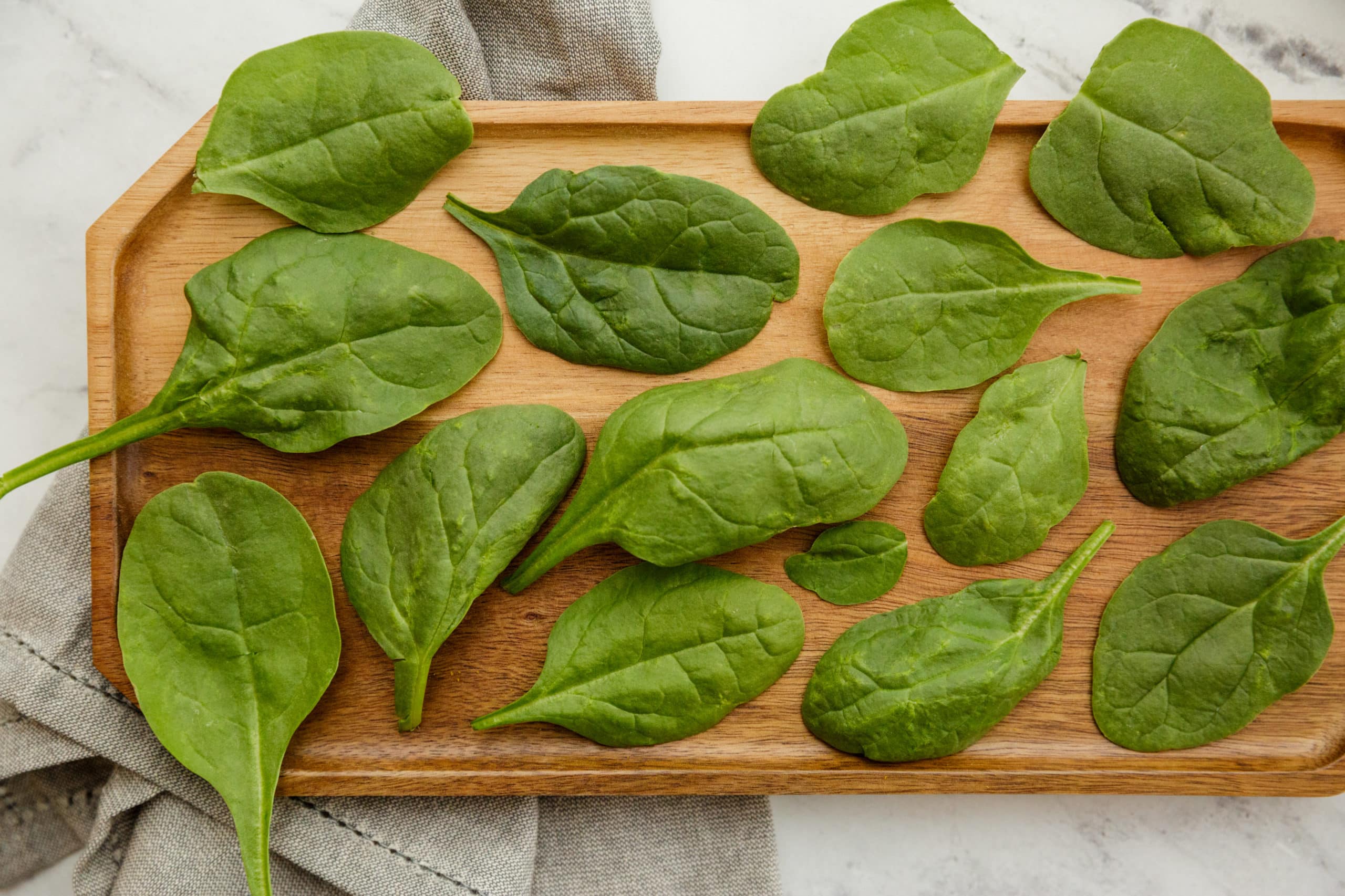
Buying Tips
When buying whole bunches of spinach, look for leaves that are crisp and dark green, and avoid those that are yellow, limp, or wilted. Spinach stems should be fairly thin. Thick, coarse stems indicate overgrown leaves that will be tough and bitter tasting.
If buying pre-washed, packaged spinach, inspect the bag for any slimy or yellow leaves, and also check the expiration or a "best if used by" date. Also, give bags a gentle squeeze; if the spinach has a springy feel, it’s fresh and crisp.
Did you know that fresh spinach can last up to 10 days? The best way to store spinach depends on whether the greens are fresh or cooked.
How to Store Fresh Spinach
Gently wrap fresh spinach in a paper towel to absorb excess water. Moisture speeds up the decaying process, so you'll want to keep it to a minimum.
Place the paper towel-wrapped spinach in a storage container or bag. Seal the container tightly.
Store the spinach in the crisper drawer of your fridge for about 10 days.
How to Store Cooked Spinach
Allow cooked spinach to cool to room temperature.
Place the spinach in an airtight storage container or zip-top bag.
Cooked spinach can last anywhere from three to five days in the refrigerator.
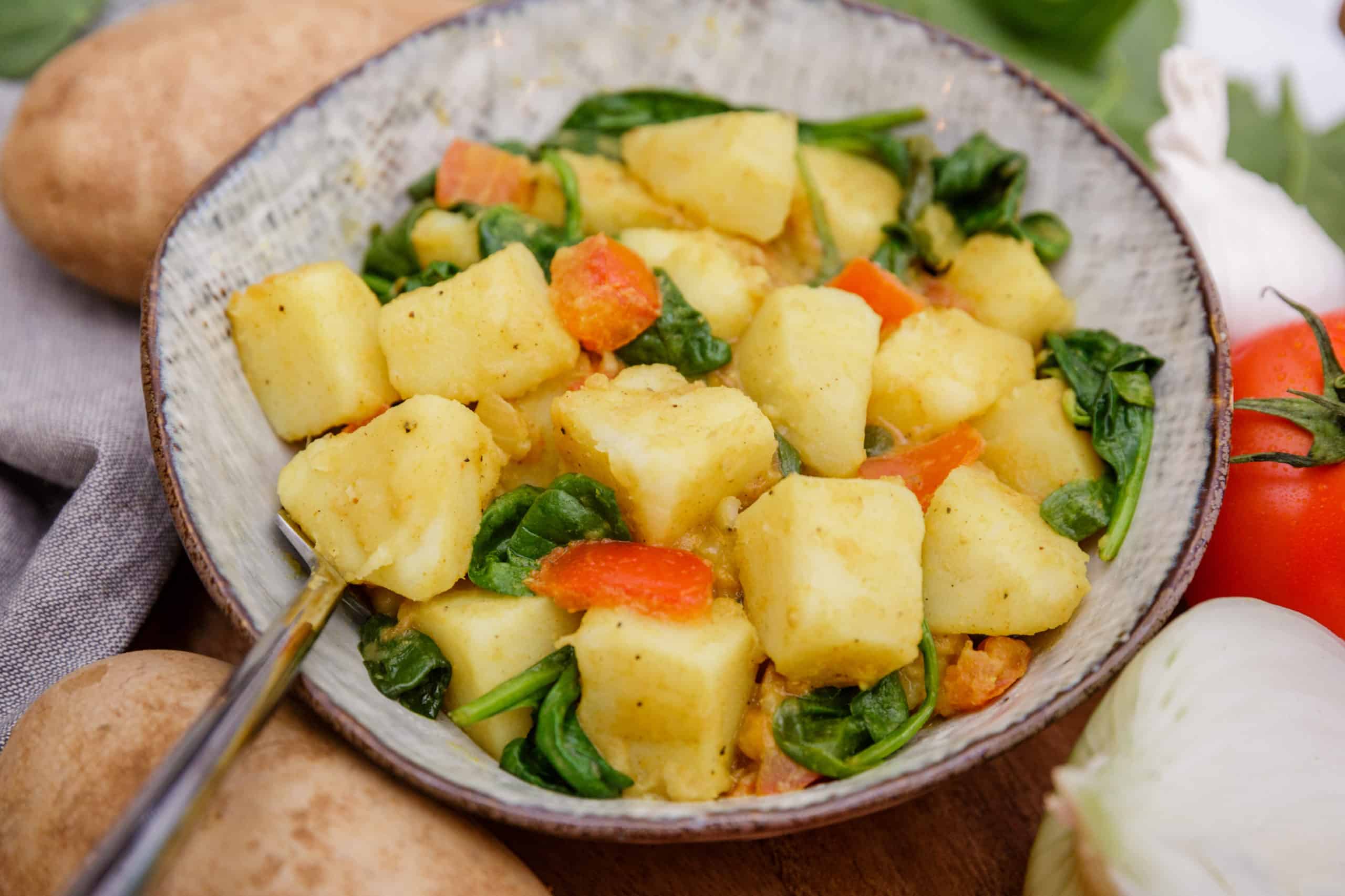
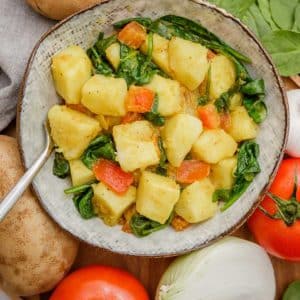
Potato Curry with Spinach
Ingredients
- 4 medium potatoes (about 1 lb) peeled and chopped into 1" chunks
- 1 tbsp low-sodium vegetable broth
- 1 medium onion finely chopped
- 2 cloves garlic minced
- 2 tsp ginger finely chopped
- 1/2 tsp cumin seeds
- 2 medium tomatoes chopped
- 1 tsp curry powder
- 1/2 tsp black pepper or to taste
- 1/2 cup thick coconut milk
- 6 cups baby spinach
Instructions
- Cut the peeled potatoes into 1" chunks and place in a saucepan with cold water. Bring to a boil and cook until just barely tender, about 15 to 20 minutes. Ensure that you don’t over cook the potatoes.
- Heat the vegetable broth in a large frying pan over medium heat. Add onion, garlic, ginger and cumin. Cook, stirring frequently, until the onion is soft. Add tomatoes, curry powder; reduce the heat and cover. Cook, stirring occasionally until tomatoes have softened.
- Add potatoes to pan, Cook, with lid on, stirring occasionally until potatoes are hot. The mixture should now have a stew consistency. If more liquid is needed add a little bit of water.
- Stir in pepper and coconut milk.
- Add the spinach and cover for a few minutes so the spinach can wilt. Serve.

